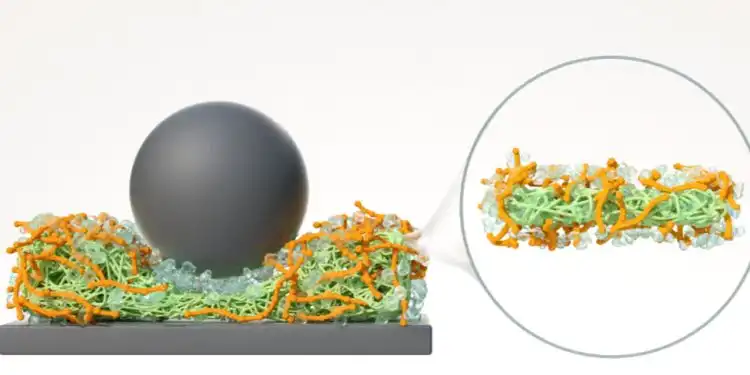An oil-free super-lubricant created from potato proteins could pave the way for sustainable engineering and biomedical applications, thanks to research led by the University of Leeds.
The team says the groundbreaking material can achieve “superlubricity” or near zero friction by mimicking biological actions, such as the fluids in human joints. It is the first eco-friendly, efficient and functional aqueous lubricant, as most others use synthetic materials.
The interdisciplinary team which included researchers from the School of Food Science and Nutrition, the Weizmann Institute of Science in Israel, King’s College London and INRAE, France, used alternative proteins such as potato protein as eco-friendly building blocks. The results of their research are published in the journal Communications Materials.
Lead author Anwesha Sarkar, Professor of Colloids and Surfaces, said: “This is a revolutionary material engineering paradigm for biomedical applications and is a key milestone towards achieving highly sustainable, plant-based aqueous lubricant materials.
“What we have done is create a self-assembly of plant protein-based protofilaments with biopolymeric hydrogels in a patchy architecture.
“Combining multiscale experimental measurements with molecular dynamics simulations, our unprecedented results reveal how a self-assembly can be fabricated using plant proteins to deliver super lubricity via hydration lubrication.”
First author, Dr Olivia Pabois, said: “What we have created could well be the next generation of engineered biomedical materials for uses such as artificial synovial fluid, tears and saliva.
“It could also be used for low-calorie foods where you can achieve low-fat items without compromising the fatty feel of higher fat content counterparts.”
The researchers used facilities at the Weizmann Institute of Science in Israel where they were given access to state-of-the-art techniques for measuring surface forces and study the surface morphology and nanotribology of the lubricants.
Professor Jacob Klein added: “The publication of this exciting work is the culmination of contacts with Professor Sarkar which started in 2019 and is an excellent example of international collaboration where the overall achievement is significantly greater than the sum of its parts.”
What we have created could well be the next generation of engineered biomedical materials
Professor Chris Lorenz from King’s College London commented: “As part of this interdisciplinary team led by Professor Sarkar, we were able to combine our expertise in molecular dynamics simulations with the experimental expertise of the other groups to link the molecular scale details of this exciting plant protein-based lubricant to its amazing lubrication properties.
“As a result, by being able to quantify the interactions which govern the assembly of the plant proteins and the hydrogel, as well as the absorption of this lubricant onto surfaces, we open the doors to potentially unlocking the ability to rationally design self-assembled structures of natural materials that optimise their lubrication properties.”
Dr Marco Ramaioli from INRAE France added: “I was very happy to contribute to this promising study that aligns perfectly to INRAE‘s objectives of laying the basis for a sustainable bio-based economy, replacing fossil-fuel-based materials and energies with their biomass-based counterparts.”
Read the paper: Communications Materials
Article source: University of Leeds
Image: Schematic illustration of hydration lubrication. The green mesh represents the potato protein-based protofilaments (PoPF) partially coated by orange-coloured filaments connected to each other representing the xanthan-based hydrogels (XGH) where the naked part of PoPF (i.e., uncoated by XGH) interacts with the tribo-contact surfaces shown as grey-coloured ball and the rectangular slab. The hydration lubrication mechanism is shown schematically by the transparent water-like spheres attached to the XGH. Credit: University of Leeds






